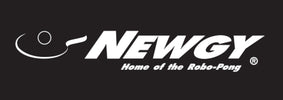Table Tennis Rally Statistics – Samson Dubina
On average:
12% of serves are not returned
18% of points are won on the 2nd ball
26% of points are won on the 3rd ball
13% of points are won on the 4th ball
11% of points are won on the 5th ball
6% of points are won on the 6th ball
4% of points are won on the 7th ball
10% of points are won after the 7th ball
So as you can see, the serve, serve return, and 3rd ball attack are critically important during a table tennis match. 56% of the points do not last more than the 3rd hit. For this reason, I would recommend practicing at least 56% of the time on the serve, serve return, and 3rd hit.
Serve
One of the best ways to improve your serve is to do it during a drill. Instead of starting the drill with a warm-up serve, start each drill with a tournament serve such short backspin. Ask your table tennis training partner to push long, next you loop the push, then you begin the footwork drill.
Serve Return
You probably have some serves that give you problems. Ask your training partner to serve those problem serves again and again while thinking of new ways to return them. Experiment by attacking slightly stronger or slightly slower, by pushing instead of looping, by adding to or stopping the sidespin, or countless types of returns. In order to properly read the spin on a serve, you should watch the racket motion, listen to the contact, watch the bounce, and look for the logo on the ping-pong ball.
The 3rd Ball
Even if your opponent doesn’t miss your serve, he might give you an easy return in which you can attack. If your 3rd ball attack is strong, it will put more pressure on your opponent to return more precisely. When he tries to return shorter or lower or faster, he will begin making more mistakes. Remember, it isn’t just about your serve in a table tennis rally. It’s also about what comes after your serve.






1 comment